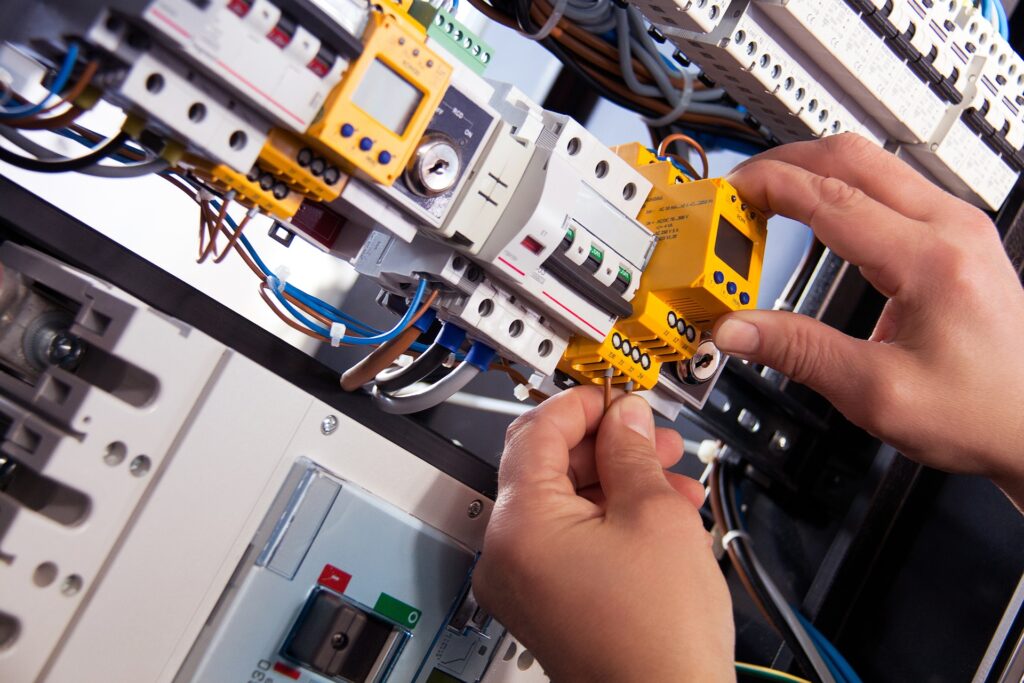Providing residential & commercial electrical services to Melbourne metropolitan region
Testing Your Safety Switch

A safety switch is a device that automatically switches off the electricity supply if an electrical fault is detected. It minimises the risk of electricity-related fires, electric shocks and injuries by turning off the electricity in your home within as little as 0.3 seconds of a fault.
The safety switch can only protect the lives and property if it is working properly and it is connected to the faulty circuit. That is why it is important to have safety switches connected to all the circuits in your house, including power-points, lighting, air-conditioning, stove, hot water and pool equipment.
It is also important to test your safety switch every three to six months to ensure that it continues to function properly and protect you and your property from electric shocks or fires.
Safety switches can be easily identified by looking for buttons marked ‘T’ or ‘test’ within the switchboard. There may be more than one and they can be of different colours, shapes or sizes. Before testing your safety switch, make sure everyone in your home is informed that the test is to be conducted. Anyone using computers or recording TV programs will get affected by turning the power off.
The testing of safety switch is very simple, press the test button marked “T” on each safety switch. This should automatically trip the switch to the off position and a ‘clunk’ sound should be heard. Immediately check inside your house which lights or appliances are off. The circuits turned off by the safety switch test mean they are protected by it. This process should be repeated for all other safety switches.
Once you are confident that each safety switch has worked correctly, reset them by lifting the switch to turn it back on.
If during the test your safety switch did not make a sound or it did not switch off any lights or appliances, then the test has failed. Contact your local electrician to have it inspected immediately to prevent electrical faults causing harm or damage.
However, it is important to note that having your local electrician test safety switches by using RCD safety switch tester they can determine the exact operating trip time and current of each safety switch. If there are any hidden faults within the safety switches, an electrician can immediately replace them.
To help remember when to test your safety switch you can do the following:
1. Use your quarterly electricity bill or rates notice as a reminder
2. Set up on your computer’s or mobile phone’s calendar an alert
3. Ask your local electrician to do follow up call every three to six months and have your safety switches inspected
Having safety switches installed is an important, but it is not enough if they are not regularly tested to make sure they operate within in specified trip time and current.
By Alen Havic | January 16th, 2019 | Electrical